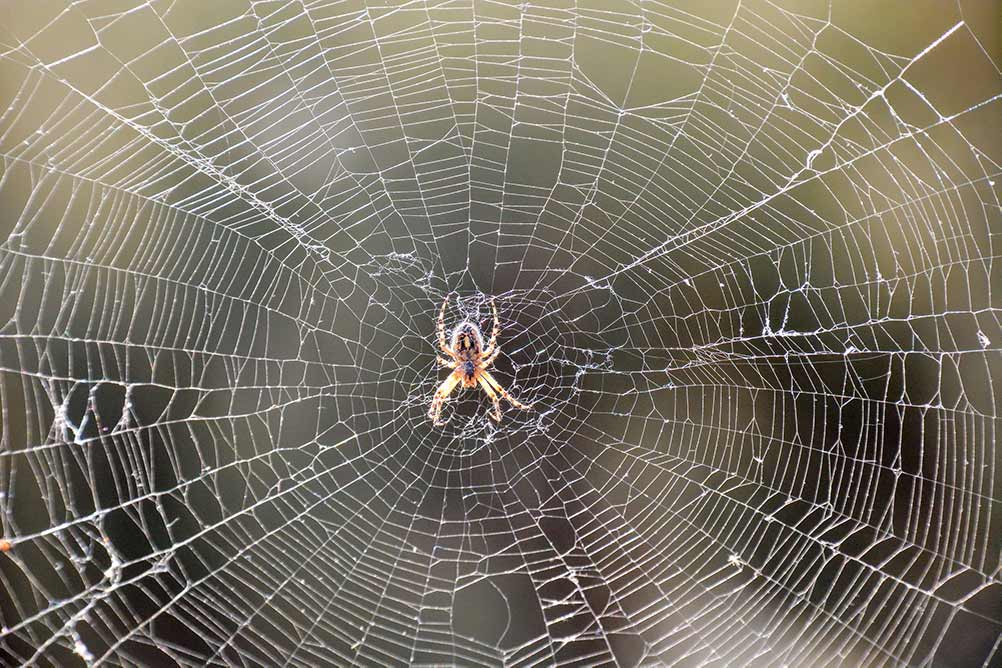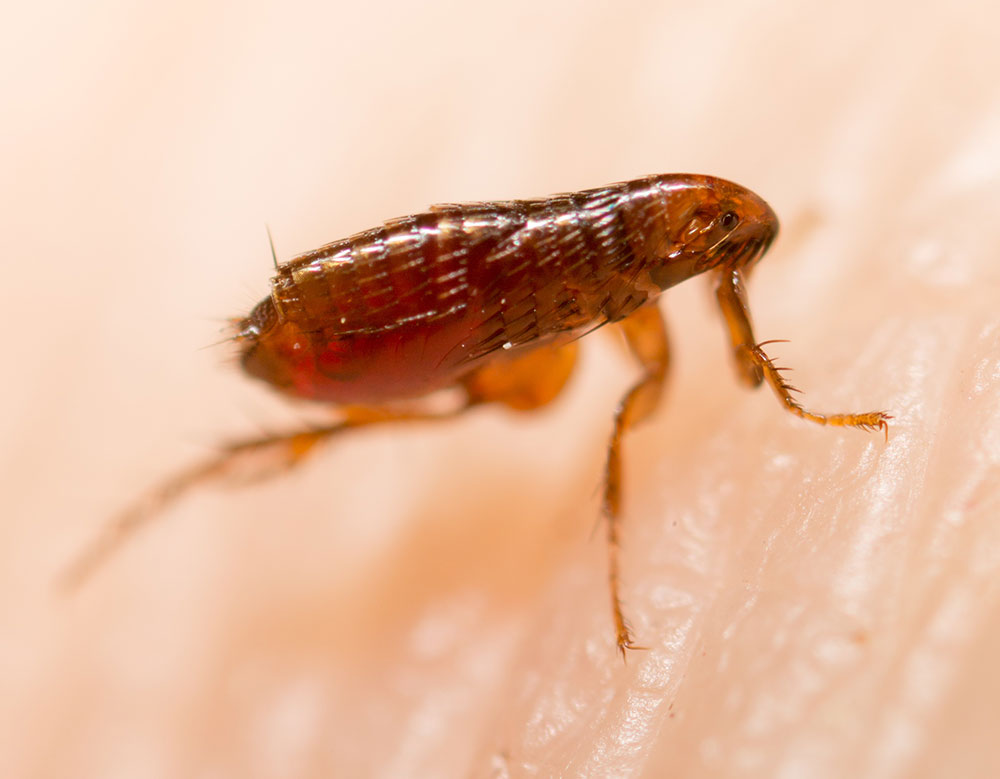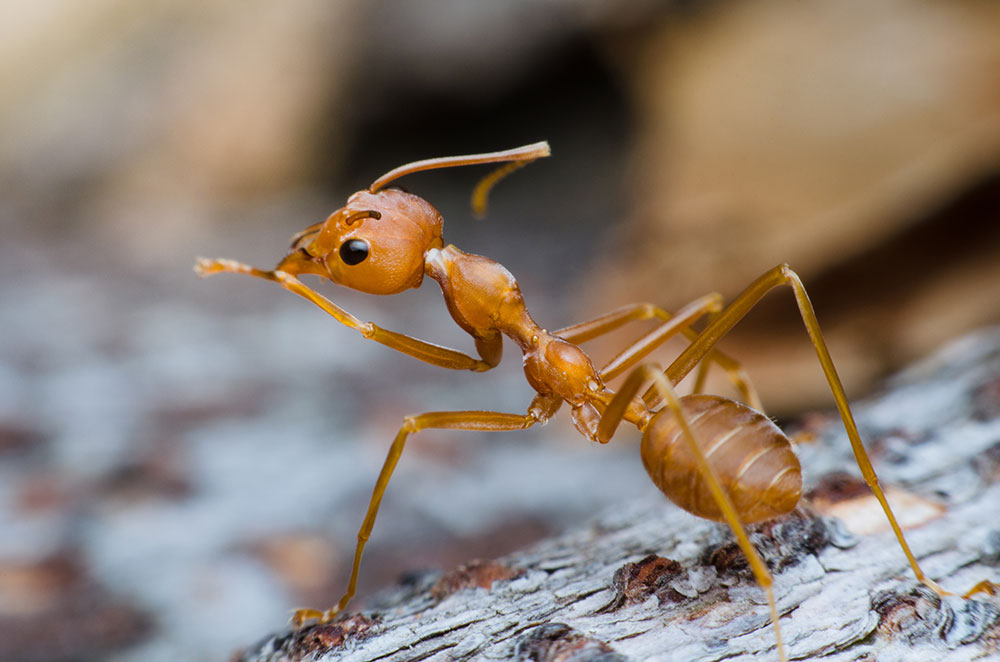|
Southern Louisiana, with its warm, subtropical climate, is a favorite spot for vacationers. It is also a prime destination for insects. They thrive in the moist climate, and the topography provides many places for them to live. Like humans, insects want to be left alone to find shelter, eat food, mate, and raise young. When the worlds of humans and insects collide, though, some biting and stinging bugs will defend themselves, however reluctantly. In certain cases, you may want to consider pest control services. In southern Louisiana, it is a good idea to ask this important question: Will it bite? Mosquitoes In short, yes. However, mosquitoes do not actually bite. Rather, female mosquitoes insert a straw-like mouthpart through and under your skin in order to feed. Your body instantly reacts to a substance the mosquito releases just beneath your skin, and your immune system kicks into action. It sends histamine, which makes blood vessels swell, causing the characteristic bumps you see after a close encounter with a mosquito. Nearby nerves become irritated from the swollen vessels, resulting in an itching sensation. Termites Not likely. In general, termites feast upon wood rather than humans. Soldier termites, though, can become biting bugs if they feel they are under attack. Therefore, bites from these termites only happen when they are severely threatened. This is a case where it is best to leave these insects alone and hire professional for termite pest control. Ticks Yes. After a tick gets on your body, it generally settles in your hair, armpit, or groin. It will get comfortable and begin to take in blood, growing larger as it feeds. The tick may gorge for days, or in some cases weeks, before releasing its hold and falling off. Once attached, ticks do not roam around, nor does one tick make multiple bites. The best way to know if you have received a bite from a tick is to search your body. Ticks are generally harmless, but they can pose a danger to those who are allergic to them. Some ticks also carry viruses that can cause debilitating illnesses. Spiders
Unlikely. Spiders are not aggressive bugs. They only bite when they are feeling threatened. In fact, they do not want to have contact with you any more than you want to with them, and they will only bite in cases of accidental contact, such as a human reaching into a nook where a spider is hiding. Most spiders’ fangs cannot penetrate human skin. More sensitive individuals could sometimes experience localized swelling, redness, and pain should a bite occur when there is inadvertent contact (during the night while sleeping, for example), but many humans would not even notice a bite. There are more than 3,000 species of spiders throughout the United States, with only three of these considered dangerous to humans. All three of those species are found in Louisiana:
The best rule to avoid these bugs is to look before sticking your hand anywhere. Pay attention to your surroundings. One of the names says it all: recluse. These spiders want to find quiet places, and they only bite if they feel severely threatened. Leave them alone, and they are more than happy to return the favor. Stink Bugs Probably not. So-called stink bugs are vegetable and fruit eaters, and they usually do not bother humans. Like other insects such as termites, they only bite if they feel severely threatened. Cockroaches Not likely. Cockroaches are generally not biting bugs. They may bite humans only in cases of severe food depletion, and even then they only target people who are sedentary. Ants Yes. Ants do bite. However, each species has its own type of “attack.” Sugar ants sometimes bite humans in defense, but their bites usually do not cause pain. Carpenter ants, however, can inflict painful bites if they are feeling threatened. Fire ants also bite, but it is their sting that has become infamous. They bite in order to grip their prey securely, then begin to sting. Fire ants can build huge mounds from which they swarm out if disturbed. They have been known to harm and even kill livestock. Bees No. Bees are not biting bugs but rather stinging insects. Female bees are the ones that can sting. When a honeybee stings, however, it pays the ultimate price: Its stinger becomes embedded in the human’s skin, and the bee dies. Queen bees retain their stingers and can sting multiple times, but they seldom venture out in the open and encountering one is not likely. Bumblebees are not hostile. When a female bumblebee feels severely threatened, though, it will caution you up to three times before stinging by raising and then straightening its middle legs and displaying its stinger. If you see this, back away from the bee, and it will not bother you. If a bumblebee is driven to sting, it retains its stinger and so does not die. Wasps No. Like bees, wasps are not biting bugs; they sting. Only the females attack humans, and their stingers do not detach, allowing them to sting multiple times during an assault. Like most insects, they become violent only to defend themselves when they feel they are in danger. They will not bite humans, but they can bite prey or objects when building a nest. Caterpillars No, but some sting. For example, the large American Dagger Moth is safe enough, but its caterpillars are bristly and will give anyone who gets too close an uncomfortable sting. Generally, if in doubt, do not touch. Insect Etiquette 101 Just like humans, insects in southern Louisiana want to feel safe while they go about their daily activities. Most biting bugs and stinging insects are not aggressive in themselves, as long as you respect their spaces and do not provoke them. In some cases, however, such as termite infestations, you may want to engage pest control professionals to prevent costly damage to your home or business. Other species, such as mosquitoes and ticks, feed on blood and will seek you out. A good rule is to leave insects alone and show consideration for their habitats, and teach children to do the same. The best way to coexist with insects is to carefully look but do not touch, and chances are they will not harm you.
6 Comments
Whether you are a pet owner or simply someone who spotted a miniscule insect in the home, you may be looking for more information about fleas. In this quick guide, you can learn about flea control, flea-related health issues and many other facts. Remember, if you fear you have a flea infestation, the fastest way to take care of your problem is to hire a Baton Rouge pest control specialist 1. They Look Like Bed Bugs Fleas and bed bugs have a similar appearance. Both are reddish brown and nocturnal, but there are ways to tell the pests apart. Fleas tend to have a short, oval shape as opposed to the longer seed shape of bed bugs. Fleas usually cap out at 3 mm while bed bugs can be as long as 5 mm. Both insects are also nocturnal, but fleas tend to hang around pets. 2. They Can Lead to Health Issues Both pets and humans may suffer from health issues due to fleas. Not everyone will have the same problems, but the health issues could include:
Fleas can lead to an uncomfortable feeling for many, but sometimes the issue can be even worse. Because these pests can be detrimental to health, you typically want to call in a Baton Rouge pest control team as soon as you spot the little bugs. 3. They Can Be Easily Transported
Just as the fleas transport certain parasites and bacteria, they can also be transported. If you have indoor-only pets, you may think that they are immune to flea infestation. However, no matter what stage a flea is at, it can be transported on shoes, pant legs, bags and other items. You could even carry a flea in without realizing it and introduce it to your beloved house pets. One reason fleas have such an easy time getting transported from one place to the next is because of their amazing jumping skills. These tiny insects can make jumps more than 150 times their body length. This allows them to launch themselves on passing animals and humans for a quick meal, egg-laying spot and ride. 4. They Can Mature at Different Speeds The typical life cycle of a flea includes four different stages: egg, larva, pupa and adult. In ideal situations, a flea can transition through these four stages in as little as 21 days. However, in tougher environments, fleas can bide their time in certain stages. Eggs, for example, may not hatch until in a space ideal for a larva to thrive. Because of these differing mature speeds, getting rid of the insects without the help of a knowledgeable pest control expert may be challenging. 5. They Can Survive in Hostile Conditions Even if you remove a flea's food source, these pests may still be able to survive for amazing lengths of time. As a pupa, fleas can go up to a year without eating. Once they reach their adult stage, they can go one or two weeks between meals. If food is scarce, fleas are not afraid to feed off of you rather than your pets. You and your Baton Rouge pest control team have to do more than eliminate food to get rid of fleas. 6. Infestations Can Happen Quickly It does not take long for a single flea to turn in to hundreds. One female can lay anywhere from 20 to 50 eggs each day. Some of those eggs will grow into more females who help speed up the infestation. One day you may have an unnoticeable problem, and the next day you may see fleas jumping from your carpet as you walk past. It is never to late to get some help from a Baton Rouge pest control company. 7. You Have To Treat Your Whole Home When trying to get rid of fleas, you cannot simply treat your pet. Eggs, larva and pupa could thrive in almost any warm, moist environment. A pest control expert may be able to help you clean up your house, clothes and car. As you treat your house, try the following:
If you simply treat your pets, the infestation can keep spreading as eggs, larva and pupae mature and start looking for food. 8. Their Bites Resemble Mosquito Bites If you've been bitten by a flea, you may notice a cluster of mosquito-like bites. The bites usually become swollen within an hour after the initial puncture. The itch usually happens almost immediately after the bite. The red dots will have a darker red center from the puncture left by the insect's mouth. In some cases, the red bump will become an open sore a day or two after the initial bite. Fleas can be a major problem in your home. Getting help from a Baton Rouge pest control company that specializes in flea control may help you eliminate the bugs quickly. If you live in Louisiana, then this may not be news to you. There is a formidable pest that lives in the south called the Rasberry crazy ant. These small creatures are a big problem and are keeping Baton Rouge pest control companies on their toes. Their erratic and unpredictable movements were the primary inspiration for the name, but there are many other disturbing yet fascinating facts about them that are just plain crazy. What Are Rasberry Crazy Ants?
These tiny but mighty ants are growing in number to the point where they are overtaking the fire ant as the reigning king of pests. Their primary weapon to overthrow the kingdom is a protective acid sheath, which protects them from the venomous sting of the fire ants. In fact, the crazy ant is able to spray a formic acid compound on its enemies, allowing the crazy ants to dominate the battle. They rub this same chemical over their own bodies to shield themselves from attackers. Where Do Crazy Ants Live? As far as a geographical location, Rasberry crazy ants are native to Argentina and the southern areas of Brazil. But since 2002, they have invaded much of Texas and are continuing to spread throughout much of the Gulf state region. The heat and humidity seem to be prime breeding ground for these prolific pests, often leading to the need for intervention by a pest control company. Former fire ant mounds are more and more frequently being taken over by their formidable opponents, not a small feat in the world of insects. In the wake of tropical storms and hurricanes, crazy ants have been seen floating en mass on the surface of floodwaters in search of a new home — alarming to Baton Rouge pest control services and fearful residents alike. It has been observed that Rasberry crazy ants take up residence in electrical fuse boxes, old abandoned automobiles, open pipes and conduits, or any other likely opening they come across. This may sound scary and a little too close to home, and it is. In fact, they are thought by pest control authorities to be attracted to many different forms of electronics and electrical systems. Moreover, it seems that when electrically shocked, the ants can come pouring out of electrical outlets and into the interiors of the buildings they inhabit — disturbing, to say the least. Not only do the insects in residence come running, but it seems that the alarm pheromones that are produced by a shock also attract other colonies and the assault can seem endless. Often when a home or business has received a crazy ant treatment from a pest control company, indescribable amounts of the tiny pest can be found in mounds around the perimeter of the structure. What Do Crazy Ants Feed On? Nothing satisfies like a good cricket dinner, but crazy ants also feed on a variety of centipedes and spiders, as well as butterflies, mites, and other arthropods at the lower end of the food chain. They eat so much that other creatures such as birds that would normally feed on the same food source are finding there is stiff competition for a good meal, while tending not to eat crazy ants themselves, preferring their more appetizing fire-ant cousins. This has the potential to wreak havoc up the food chain and is causing environmental concerns. Pest control authorities have also observed that crazy ants prefer a carbohydrate-based diet, although they are considered omnivorous. The food of choice for crazy ants is the honeydew produced by any of twenty-two different species of insects, including certain aphids, whiteflies, mealybugs, and beetles. The ants can’t resist the honeydew, the sweet, sticky waste product left behind on stems and leaves of certain plants by these insects; in fact, the crazy ants defend the hemipterans in many cases, in return for the regular production of the sweet treat. What Damage Can Crazy Ants Cause? Aside from the damage to the environment and even the food chain, Baton Rouge pest control professionals consider these highly destructive insects. As discussed earlier, Rasberry crazy ants are attracted to electrical and electronic components. Even NASA has experienced damaging invasions in their electrical wiring systems and has called upon Tom Rasberry, the discoverer of this nasty little ant, for help in eradicating them. Inside the walls of residential and commercial buildings alike, they can build up, causing short circuits, clogged switches and other problems, just from the sheer number of them. Crazy ants but have also been known to attack cattle and sting cows around their eye sockets, nostrils and even the hoof area. This has caused great distress among cattle producers, as many of these animals are damaged or killed and cannot be marketed. These tiny creatures deliver a large dose of pain to humans as well. As with fellow insects, such as mosquitos, pathogenic organisms have been known to be transferred to humans by their sharp and painful bites. Scheduling ant treatments by professional pest control specialists can reduce these incidents. How Do You Prevent a Crazy Ant Invasion? Creating unfavorable living conditions is key to keeping crazy ants away in the first place. They favor humid, wet conditions and will take shelter under any bit of loose debris. Keep garbage cans away from the building and tie bags to help keep them from food sources. Treating your outdoor surfaces will help with this as well. Keep an eye on planters and do not overwater them. Regularly remove fallen leaves, bits of bark or other yard debris. Repair leaks around faucets. Irrigate only as necessary to prevent soil from becoming a saturated haven. Crazy ants are drawn to compost pits and hay bales, as well as the engines of junked tractors and farm equipment. Report possible sightings to Baton Rouge pest control services. Knowledge is power, as they say. Taking the steps outlined above may help prevent problems on your property. Rasberry crazy ants are resilient and often recolonize where they have found favorable living conditions. This almost always requires that a crazy ant treatment is done on a regular basis to keep these invaders at bay. Bug Ninja pest control professionals are the safest bet to keep you and not these insects the king of your castle. |
AuthorI really enjoy researching and writing about pests. The more we know about bugs, the easier it becomes to control them. Categories
All
Archives
February 2024
|
|
© 2021 Bug Ninja Pest Control.
All rights reserved. |
Services |
Contact |
|






 RSS Feed
RSS Feed

